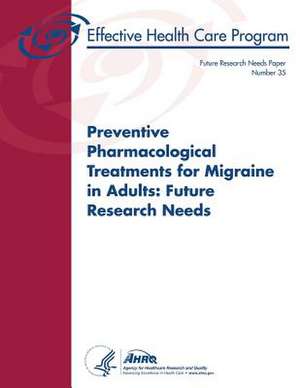Preventive Pharmacological Treatments for Migraine in Adults
Autor U. S. Department of Heal Human Services, Agency for Healthcare Resea And Qualityen Limba Engleză Paperback
Preț: 91.85 lei
Preț vechi: 96.68 lei
-5% Nou
Puncte Express: 138
Preț estimativ în valută:
17.58€ • 18.40$ • 14.54£
17.58€ • 18.40$ • 14.54£
Carte indisponibilă temporar
Doresc să fiu notificat când acest titlu va fi disponibil:
Se trimite...
Preluare comenzi: 021 569.72.76
Specificații
ISBN-13: 9781492204930
ISBN-10: 1492204935
Pagini: 64
Dimensiuni: 216 x 280 x 3 mm
Greutate: 0.17 kg
Editura: CREATESPACE
ISBN-10: 1492204935
Pagini: 64
Dimensiuni: 216 x 280 x 3 mm
Greutate: 0.17 kg
Editura: CREATESPACE
